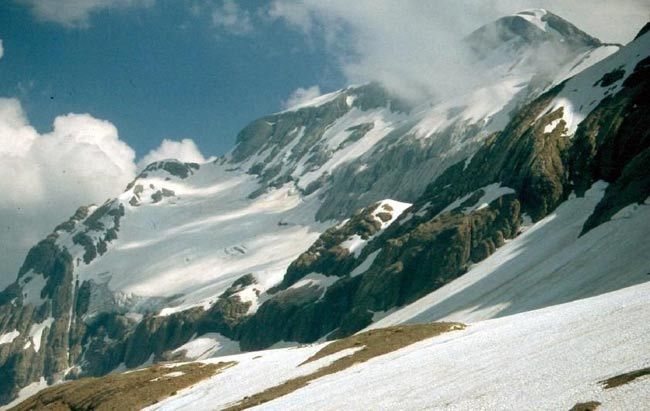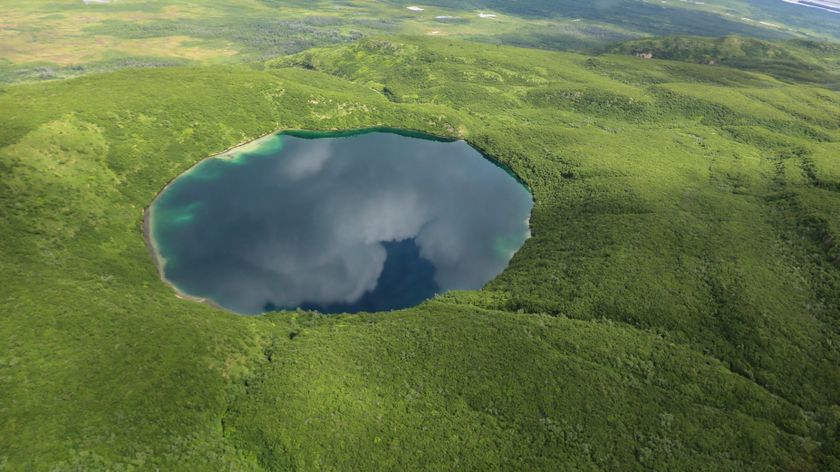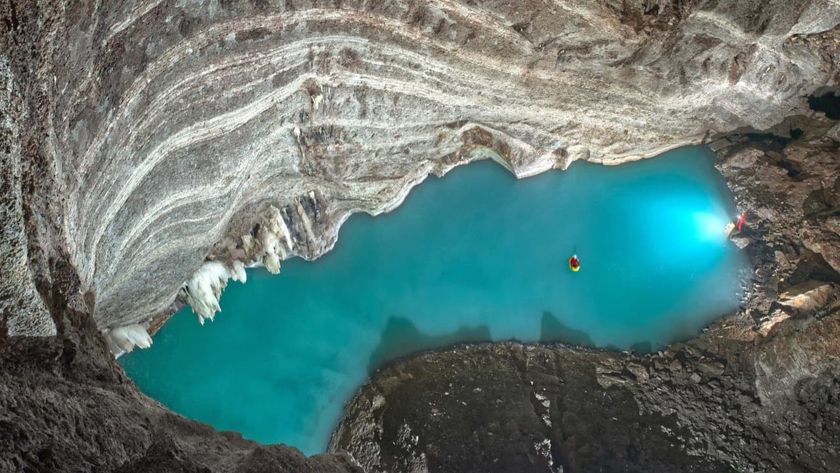Climate Controls Mountain Heights, New Study Shows

From the highest peaks of the Himalayas to the flat-topped rises found in Canada, the height of Earth’s mountains may be controlled more by climate-influenced glaciers than the tectonic uplift of Earth's surface, a new study finds.
Glaciers whittle mountains down near the poles, while in the tropics, mountains are able to soar, the new thinking goes.
Mountains originate from the collision of two or more tectonic plates, the jigsaw pieces of Earth's crust that are constantly on the move, pushed by the flowing mantle below. As the plates collide, the crust is squashed, thickening and rising up.
But while some mountain ranges closer to the equator, such as the Alps and Himalayas, feature sharp crags that tower several miles above sea level, others that sit at higher latitudes, such as ranges in Canada and Norway, have shorter and flatter plateau-like tops.
Scientists have long attributed these differences to different rates of plate tectonic force: Higher mountains were thought to be created by more intense tectonic action than shorter ones.
But the new study, detailed in the Aug. 13 issue of the journal Nature, used radar images of Earth's surface (taken during a NASA space shuttle mission several years ago) and computer models to show that this isn't the case at all. Instead, glacial action, governed by climate, is responsible for the height differences in many of Earth's mountain ranges.
"With the aid of computer simulations, we have found the reason why this pattern exists," said David Egholm of Aarhus University in Denmark. "So we've basically explained why there is a link between the presence of glaciers, climate, and the height of mountains."
Sign up for the Live Science daily newsletter now
Get the world’s most fascinating discoveries delivered straight to your inbox.
Snowline altitude
Snow-capped peaks are a familiar postcard picture, but snow and ice only accumulate significantly above what is called the snowline altitude. When enough snow and ice build up to form a glacier, that huge moving block of ice will eventually begin to grind away at the mountain, counteracting the tectonic forces pushing the mountain peak upward.
"So once plate tectonics pushes the surface of the Earth above the snowline altitude, a glacier starts to accumulate, and then basically you reach sort of a steady state where the mountains really do not get any higher," Egholm told LiveScience.
If the snowline altitude is very high, the glacial buildup will be limited and so little of the mountain will be ground down. On the other hand, if the snowline altitude is much lower, as is the case nearer Earth's poles, the glaciers will effectively grind the mountain away.
"In order to get really high mountains you need a high snowline altitude, otherwise glaciers will basically destroy the mountain at elevations below that," Egholm explained.
These differences in glacial action explain the discrepancies between high- and low-latitude mountain ranges: At low latitudes, where the climate is warmer, the snowline altitude is much higher (as high as 3 miles (5 km) above sea level) than at the much colder climes at high latitudes.
"It's not a coincidence that the high mountains exist around the equator, where the snowline is high," Egholm said.
The forces of plate tectonics are still pushing up the crust under high-latitude ranges, "but [the mountain tops] just get removed as quickly by glaciers as they accumulate by plate tectonics," Egholm said.
Glacial buzzsaw
The observations of Egholm's team also explain why high-latitude mountain ranges tend to have flatter tops. Previously, scientists thought that the plateaus formed near sea level and were later uplifted by plate tectonics. But the new work shows the mountains were uplifted first, and then worn down by glacial action.
At the far north and far south near Earth's poles, "what you see there is that glaciers have basically completely removed the part of the mountains that were above the snowline," Egholm explained. "So what you get there is really the image of a mountain range where the top has been cut off at the snowline altitude."
This feature is called the "glacial buzzsaw," "because it really looks like a buzzsaw has been at work in the mountains," Egholm added.
The glacial action can also explain why in a range like the Andes, which runs north to south, the northern mountains are higher than the southern — glacial action has worn down the southern peaks (because they are at higher latitudes in the southern hemisphere).
Knowing about this glacial component can also help geologists understand tectonic processes in the past based on changes in climate. For example, in the Cretaceous, when Earth's climate as a whole was much warmer, mountain heights in general would likely have been higher, because snowline altitudes everywhere would have been higher, Egholm said.
What effect our current warming climate will have on mountain height, if any, is hard to say, because tectonic uplift happens on such a slow timescale, Egholm said. But if the climate stays warmer for many thousands of years, mountains might become slightly higher, he added.
- 101 Amazing Earth Facts
- Test Your Knowledge of the Continents
- Images: Magical Mountains

Andrea Thompson is an associate editor at Scientific American, where she covers sustainability, energy and the environment. Prior to that, she was a senior writer covering climate science at Climate Central and a reporter and editor at Live Science, where she primarily covered Earth science and the environment. She holds a graduate degree in science health and environmental reporting from New York University, as well as a bachelor of science and and masters of science in atmospheric chemistry from the Georgia Institute of Technology.


